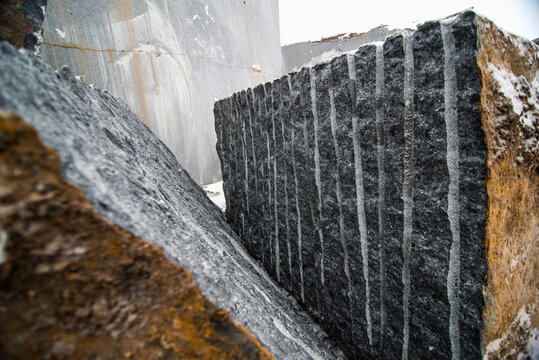Unearthing the Rich History and Sustainable Practices of Granite Quarrying
As we base on the precipice of uncovering the intricate tapestry of granite quarrying, a journey via time discloses not simply the physical act of extracting rock however likewise the social and historical value woven right into the very material of this practice. From the ancient origins that laid the structure for modern-day quarrying techniques to the lasting techniques that are forming the future of this market, each chisel mark on granite surfaces narrates waiting to be discovered (granite quarries in south africa). The legacy of granite quarrying extends much past plain removal; it is a testament to human ingenuity, strength, and the enduring attraction of this impressive stone
Old Beginnings of Granite Quarrying
Dating back to old human beings, the practice of quarrying granite has been an important part of human history and architectural advancement. The earliest evidence of granite quarrying dates back to ancient Egypt, where enormous pyramids and intricate sculptures were crafted from this long lasting rock. The Egyptians utilized primitive tools to draw out granite blocks from quarries, showcasing the relevance of this product in their huge buildings.
Progressing in history, the Greeks also made considerable payments to the quarrying of granite. The Greeks made use of granite in various architectural wonders, such as holy places and statuaries, demonstrating their ability in shaping and sculpting this sturdy rock. The Romans further refined the techniques of quarrying granite, employing advanced tools like blades and hammers to extract and form granite for their renowned frameworks.
Via the centuries, the technique of quarrying granite has actually progressed, with modern-day innovations boosting performance while preserving the ageless appeal of this natural rock - granite quarries in south africa. From old people to contemporary building contractors, the legacy of granite quarrying remains to form our globe
Development of Quarrying Methods
The development of quarrying methods has been noted by a constant development in the direction of higher efficiency and precision in drawing out granite. From the basic methods employed by our ancestors to the sophisticated modern technologies utilized in modern-day quarrying operations, the market has actually undergone significant developments. Early quarrying techniques included manual work with standard tools such as chisels, hammers, and wedges to remove granite blocks from the earth. As human beings advanced, methods like fire-setting and primitive explosives were introduced to assist in the extraction process.
In more recent times, the development of machinery transformed the quarrying industry, enabling quicker removal rates and increased performance. Technologies such as diamond wire saws, high-pressure water jets, and pneumatically-driven drills have actually come to be basic in modern-day quarries, permitting accurate cutting and minimized waste. Innovations in computer-controlled tools and 3D modeling have optimized quarrying operations, leading to minimal environmental impact and enhanced sustainability methods. As the demand for granite continues to increase, the evolution of quarrying strategies stays integral to conference navigate here industry needs efficiently and sustainably.
Cultural Value of Granite
Granite holds a profound social importance throughout various civilizations due to its long-lasting presence in building work of arts and admired monoliths. The cultural value of granite prolongs past its physical characteristics; it personifies resilience, security, and timelessness, making it a symbol of withstanding heritages and traditions.

Sustainable Practices in Quarrying
Among the rich history of granite quarrying and its cultural value exists an expanding emphasis on lasting techniques within the sector. As ecological awareness and problems about resource exhaustion have actually heightened worldwide, the quarrying market has actually significantly welcomed sustainable methods to reduce its effect on the atmosphere and bordering neighborhoods.

Moreover, recovery and rehabilitation of quarry sites post-extraction are integral to lasting techniques. By restoring quarried areas to a natural or valuable state, such as producing wild animals environments or entertainment spaces, quarriers can offset the environmental impact of their procedures and add positively to the local community.
Heritage of Granite Quarrying
With a historical background steeped in craftsmanship and industrial development, what sustaining impact has granite quarrying left on the landscape of modern society? The legacy of granite quarrying transcends mere removal techniques; it has actually formed building marvels, metropolitan landscapes, and social heritage worldwide. The sturdy nature of granite has actually made it a recommended selection for monoliths, structures, and framework, standing as a testimony to the ability and creativity of quarry workers across generations.
Furthermore, the economic footprint of granite quarrying can not be forgotten. The industry continues to provide job opportunity and drive regional economies in regions where granite extraction prevails. It has actually likewise stimulated technical innovations site here in quarrying strategies and devices, leading to a lot more effective and sustainable techniques.
In terms of sustainability, the legacy of granite quarrying includes efforts to minimize environmental influences with reclamation jobs and responsible resource monitoring. By balancing economic rate of interests with ecological stewardship, the market makes every effort to ensure that future generations can proceed to take advantage of this long-lasting natural deposit.
Verdict
